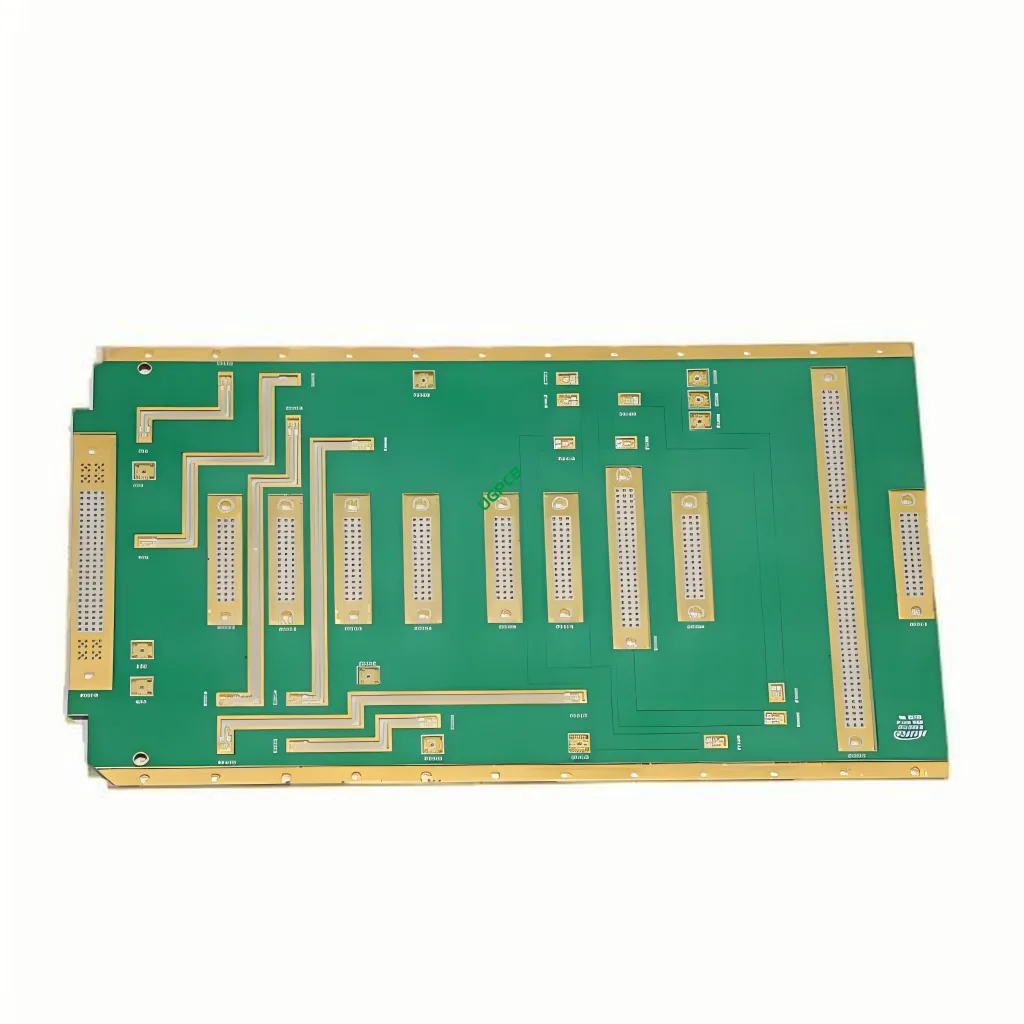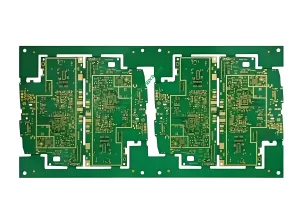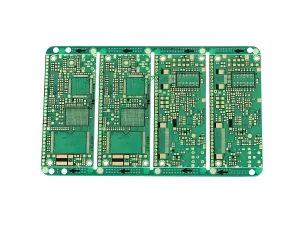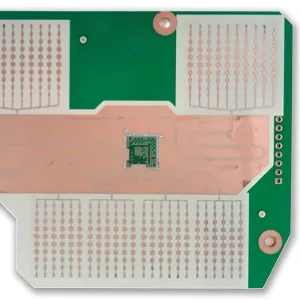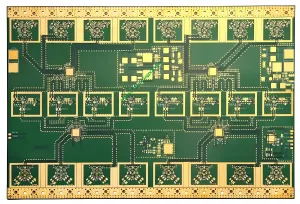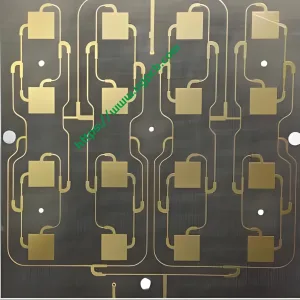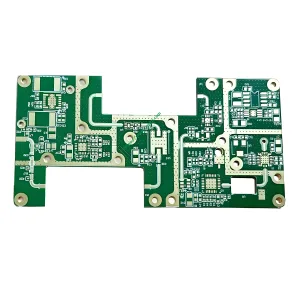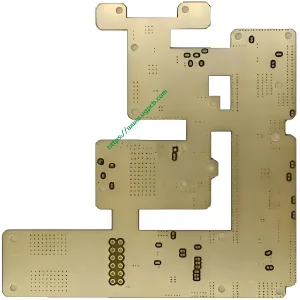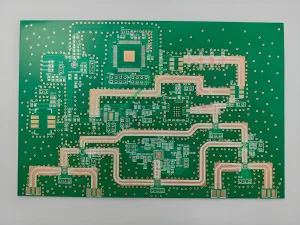Overview of Microwave Hybrid PCB
Microwave Hybrid PCB, also known as Hybrid Printed Circuit Board, is a specialized type of circuit board designed for high-frequency applications. It combines the benefits of traditional FR4 material and advanced materials like Teflon and ceramic to meet stringent performance requirements in various industries.
Definition and Design Considerations
A Hybrid PCB integrates different substrate materials within a single board. This design approach allows for optimizing dielectric constants (ranging from 2.2 に 16) and tailoring the board’s properties for specific high-frequency needs. Key design considerations include material selection, layer stack-up, and impedance control to ensure signal integrity and minimize losses.
動作原理と応用例
The working principle revolves around managing electromagnetic waves at microwave frequencies efficiently. By using a combination of low and high dielectric constant materials, Hybrid PCBs can achieve better impedance matching, reduced signal loss, and enhanced overall performance. They are widely used in telecommunications, レーダーシステム, 衛星通信, and other high-frequency microwave applications.
分類と資料
Types:
- 2-Layer to Multi-Layer Hybrid PCBs: Depending on complexity, these boards can range from two layers up to multiple layers, accommodating intricate circuit designs.
- Thickness Variants: Available in thicknesses from 0.1mm to 12mm, providing flexibility for different application requirements.
Core Materials:
- テフロン: Known for its low dielectric constant and loss tangent, making it ideal for high-frequency applications.
- Ceramic + FR4: Combines the thermal stability of ceramic with the mechanical robustness of FR4, offering a balanced solution for many designs.
Performance and Structure
Hybrid PCBs excel in high-frequency performance due to their carefully selected materials and precise manufacturing processes. They feature controlled copper thickness (from 0.5oz to 3oz), which directly impacts current-carrying capacity and heat dissipation. The surface technology options, including Silver, 金, and OSP (有機はんだ付け性保存剤), further enhance solderability and corrosion resistance.
Characteristics and Production Process
Key characteristics of Microwave Hybrid PCBs include:
- Enhanced signal integrity through optimized dielectric constants.
- Superior thermal management capabilities.
- Customizable to meet specific application needs regarding frequency range, power handling, and environmental conditions.
The production process involves several stages:
- 材料の選択: Choosing appropriate core and prepreg materials based on design specifications.
- ラミネート加工: Combining layers under pressure and heat to form a solid board structure.
- エッチング: Removing unwanted copper to create the desired circuit pattern.
- 表面仕上げ: Applying the chosen surface treatment to protect against oxidation and improve solderability.
- 品質保証: Ensuring the final product meets IPC6012 Class 2 または 3 標準, guaranteeing reliability and performance.
シナリオを使用します
Microwave Hybrid PCBs are essential in scenarios where conventional PCBs cannot provide the necessary performance levels. These include but are not limited to:
- Telecommunication infrastructure, such as base stations and antennas.
- Aerospace and defense systems requiring reliable high-frequency operation.
- Medical equipment utilizing microwave technology for diagnostics or treatment.
- High-speed data communication networks and servers.
要約すれば, Microwave Hybrid PCBs represent a sophisticated solution for demanding high-frequency applications, combining advanced materials and precise engineering to deliver exceptional performance and reliability.
 UGPCBのロゴ
UGPCBのロゴ

